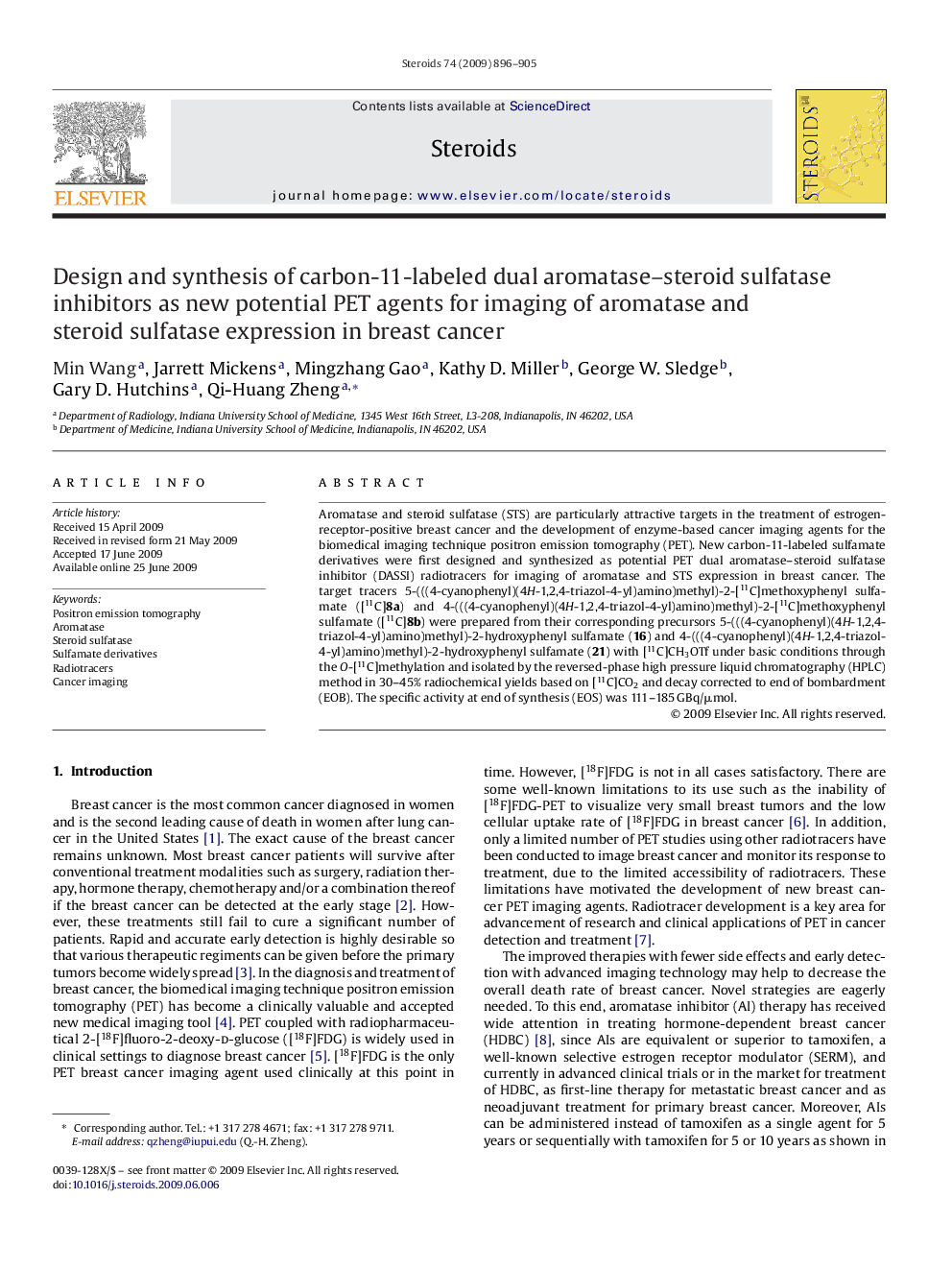| Article ID | Journal | Published Year | Pages | File Type |
|---|---|---|---|---|
| 2028640 | Steroids | 2009 | 10 Pages |
Aromatase and steroid sulfatase (STS) are particularly attractive targets in the treatment of estrogen-receptor-positive breast cancer and the development of enzyme-based cancer imaging agents for the biomedical imaging technique positron emission tomography (PET). New carbon-11-labeled sulfamate derivatives were first designed and synthesized as potential PET dual aromatase–steroid sulfatase inhibitor (DASSI) radiotracers for imaging of aromatase and STS expression in breast cancer. The target tracers 5-(((4-cyanophenyl)(4H-1,2,4-triazol-4-yl)amino)methyl)-2-[11C]methoxyphenyl sulfamate ([11C]8a) and 4-(((4-cyanophenyl)(4H-1,2,4-triazol-4-yl)amino)methyl)-2-[11C]methoxyphenyl sulfamate ([11C]8b) were prepared from their corresponding precursors 5-(((4-cyanophenyl)(4H-1,2,4-triazol-4-yl)amino)methyl)-2-hydroxyphenyl sulfamate (16) and 4-(((4-cyanophenyl)(4H-1,2,4-triazol-4-yl)amino)methyl)-2-hydroxyphenyl sulfamate (21) with [11C]CH3OTf under basic conditions through the O-[11C]methylation and isolated by the reversed-phase high pressure liquid chromatography (HPLC) method in 30–45% radiochemical yields based on [11C]CO2 and decay corrected to end of bombardment (EOB). The specific activity at end of synthesis (EOS) was 111–185 GBq/μmol.
